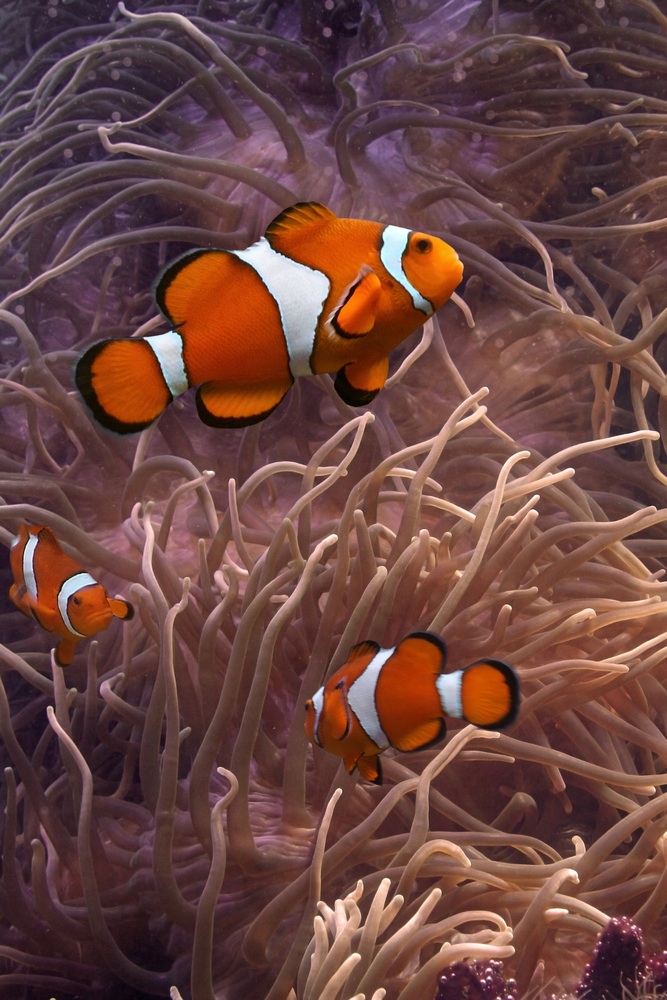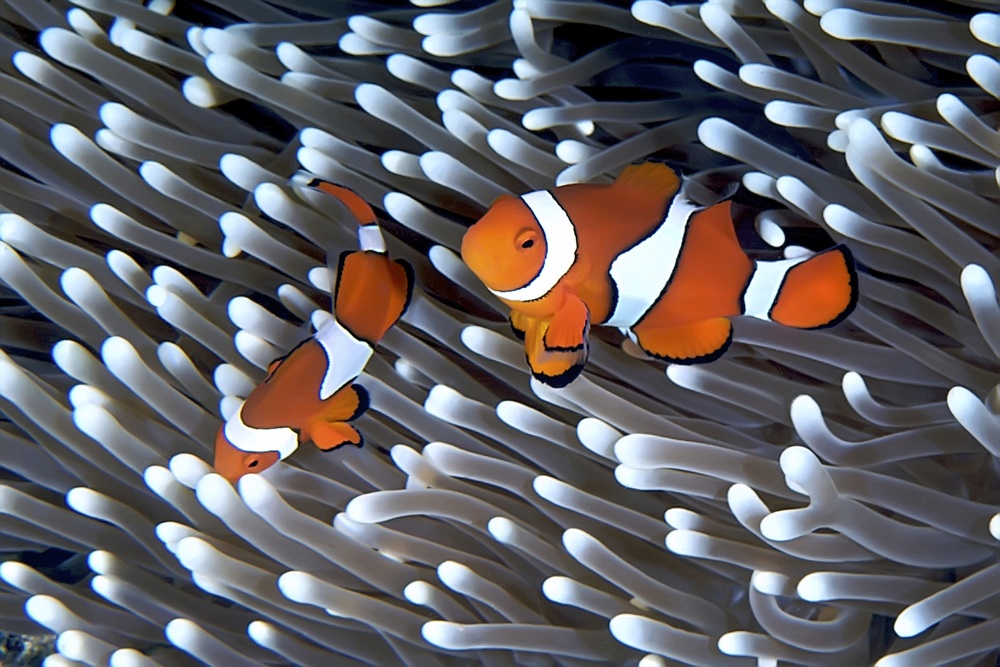Clownfish (Anemonefish)

Marine fish-keeping is a relatively new branch of the aquatic hobby, being very dependent on technology to replicate reef conditions. Clownfish have become more popular through the Noughties thanks partly to the film Finding Nemo, which starred an animated clownfish.
Did you know?
These fish are called clownfish because their vivid colouration has been likened to the make-up of circus clowns. They are also known as anemonefish because they seek out the protection of the tentacles of sea anemones, being immune to their stings. This actually benefits their host too, as the fish bring back food, with the anemone eating their leftovers.
Space requirements
Larger species such as the maroon clown, growing up to 15cm (6in) need a correspondingly bigger tank. As a guide, allow 2 litres per centimetre of fish - equivalent to 1 gallon of water per inch.
Care requirements
The bad news is that saltwater aquariums tend to be more expensive than freshwater set-ups, with the water chemistry requirements for the fish being more precise as well. You’ll need a bag of specially-formulated marine salt to mix into the water, and then check you’ve got the concentration right. It’s quite easy to work out the volume of the tank in litres though. You simply need to multiply the length, depth and height figures in millimetres for this purpose, and divide by 1000.
Temperament
Can be twitchy and territorial in some cases. Best to introduce all the fish to the tank at the same time. Having an anemone may help them to settle down, but tank-bred fish can become confused, as they do not instinctively know what they should do when confronted by this monstrous invertebrate. If you buy two immature clownfish, you can be certain that you’ll end up with a true pair anyway, because the dominant member will change into a female of the species.
Varieties

Common clowns are widely-kept in aquarium circles, and make a good introduction to the group. They have three white bands around their bodies, but these differ somewhat in shape. This feature helps to distinguish them at a glance from two-banded clownfish, while their colouration is lighter than that of Clark’s clownfish. Skunk clownfishes are popular too, with a white area extending down the back.
Likely illnesses
Pretty tough, which is why clownfish are recommended as being suitable for newcomers to marine fishkeeping. They can be at risk from some external parasite infections though, which cause them to produce more body mucus, with their colour fading. Their breathing may also become laboured, but these signs can be reversed by immersing affected fish in treatment baths filled with suitable medication.
Lifespan
Averages 5-10 years. Well-protected in the wild by being able to dart back in amongst the stinging tentacles of anemones, where predators will not dare to follow.